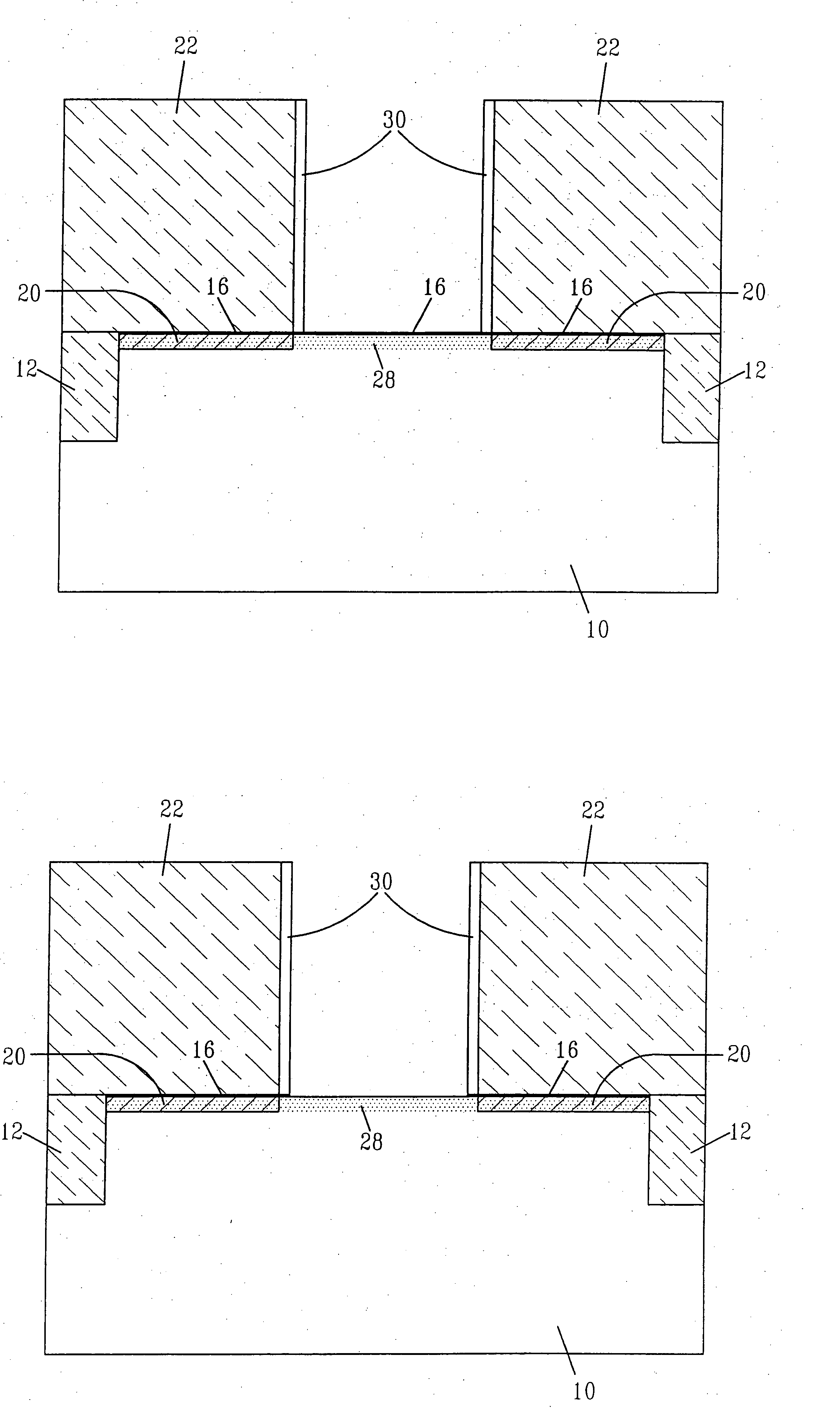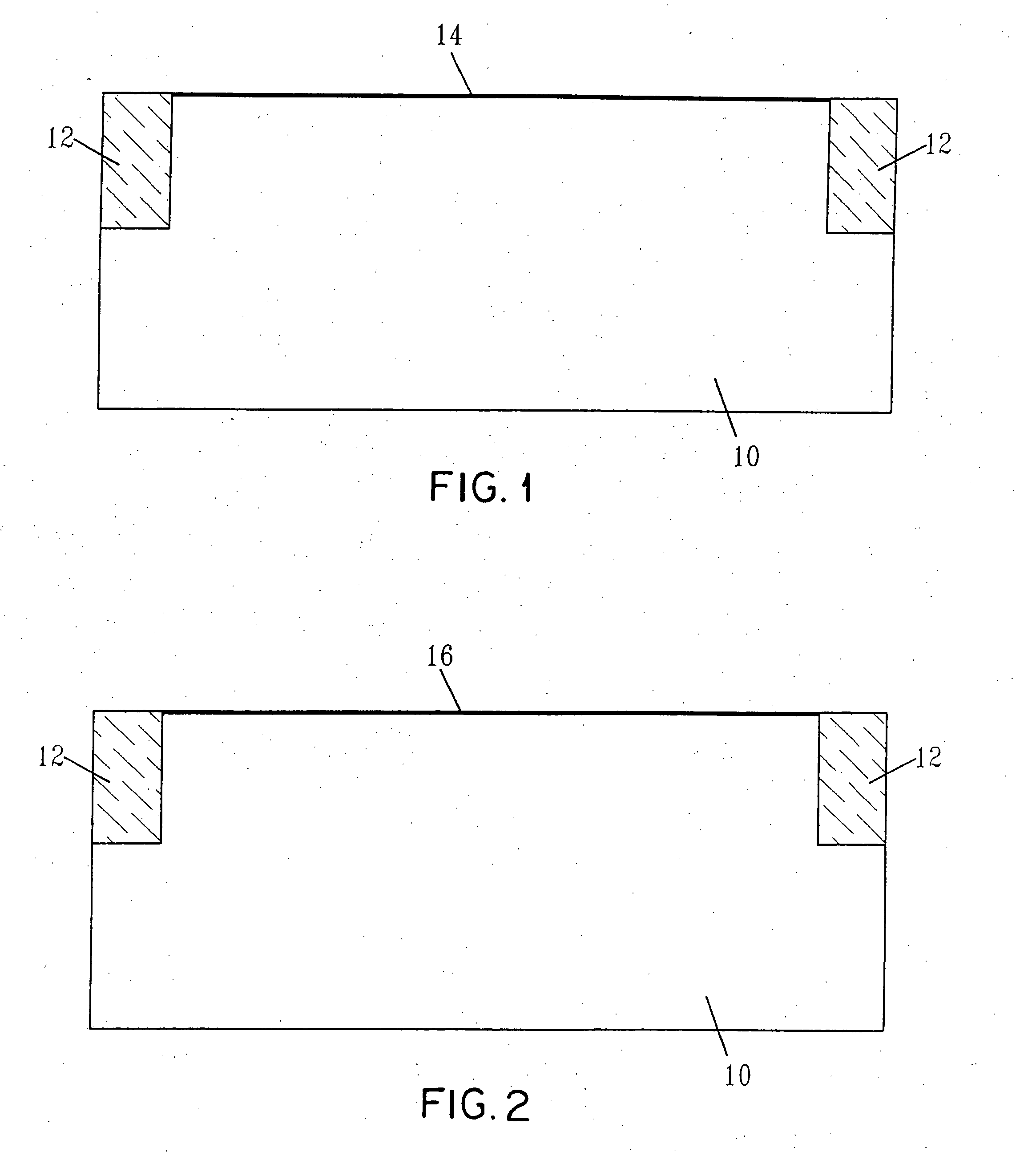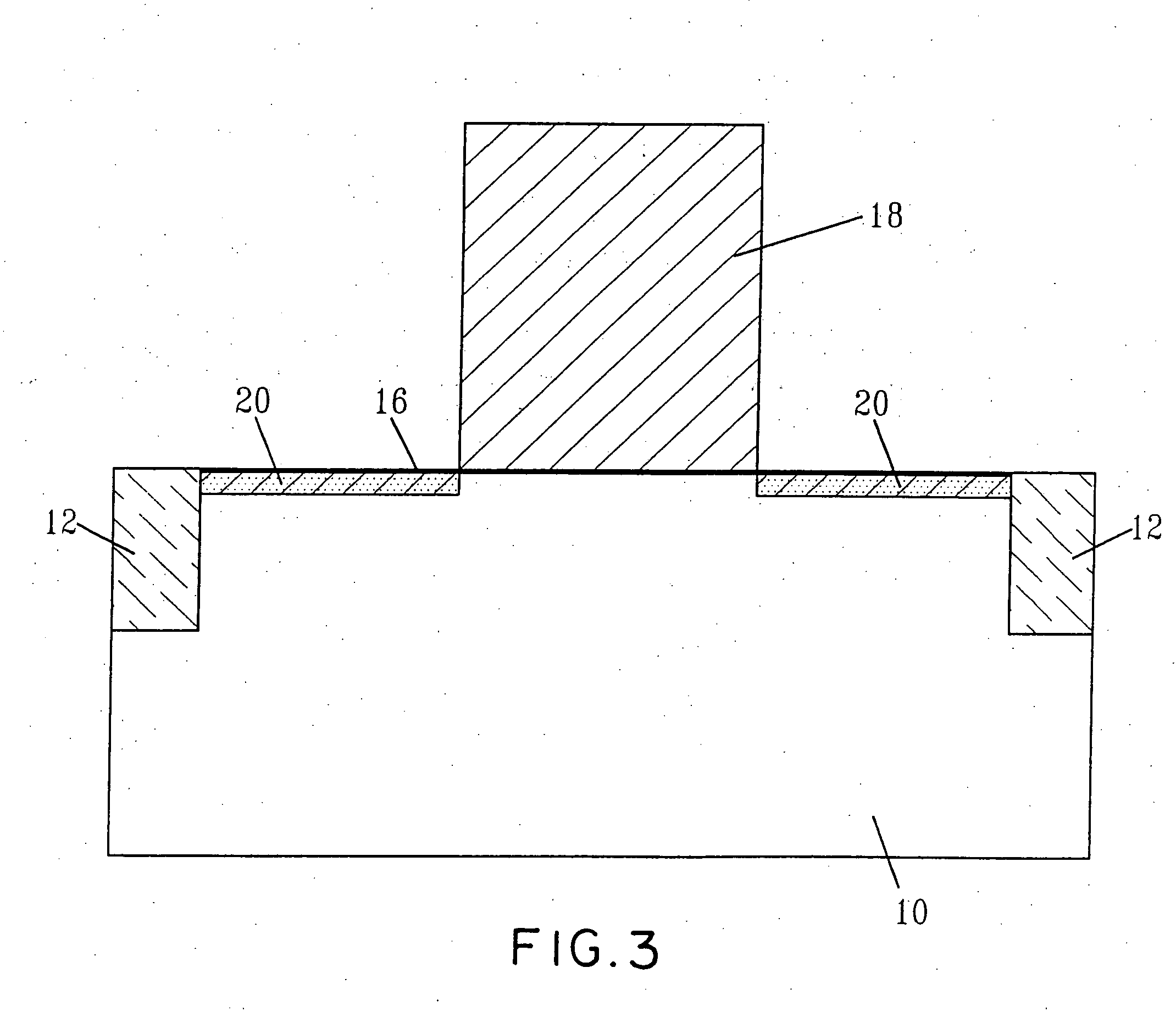Low resistance T-gate MOSFET device using a damascene gate process and an innovative oxide removal etch
a damascene gate and low resistance technology, applied in the field of low resistance damascene gate metal oxide semiconductor field effect transistor (mosfet) devices, can solve the problems of reducing device performance, increasing the number of mosfet devices with high yield and reliability, and increasing the integration of mosfet devices with high sheet resistan
- Summary
- Abstract
- Description
- Claims
- Application Information
AI Technical Summary
Benefits of technology
Problems solved by technology
Method used
Image
Examples
Embodiment Construction
[0022] The present invention, which provides a method for fabricating a low-resistance T-gate MOSFET device, will now be described in more detail by referring to the drawings that accompany the present application.
[0023]FIG. 1 shows an initial structure that is employed in the present invention. Specifically, the initial structure shown in FIG. 1 comprises Si-containing substrate 10 having isolation regions 12 formed therein as well as pad oxide layer 14 located atop a surface of Si-containing substrate 10. The term “Si-containing is used in the present application to denote a material that includes silicon. Illustrate examples of such Si-containing substrates include, but are not limited to: Si, SiGe, SiGeC, SiC, Si / Si, Si / SiC, Si / SiGeC and Si-on-insulator (SOI) where substrate 10 is the top Si-containing layer of the SOI substrate. In the case of SOI substrates, the SOI substrate will include a buried oxide region beneath the top Si-containing layer which serves to electrically i...
PUM
 Login to View More
Login to View More Abstract
Description
Claims
Application Information
 Login to View More
Login to View More - R&D
- Intellectual Property
- Life Sciences
- Materials
- Tech Scout
- Unparalleled Data Quality
- Higher Quality Content
- 60% Fewer Hallucinations
Browse by: Latest US Patents, China's latest patents, Technical Efficacy Thesaurus, Application Domain, Technology Topic, Popular Technical Reports.
© 2025 PatSnap. All rights reserved.Legal|Privacy policy|Modern Slavery Act Transparency Statement|Sitemap|About US| Contact US: help@patsnap.com



